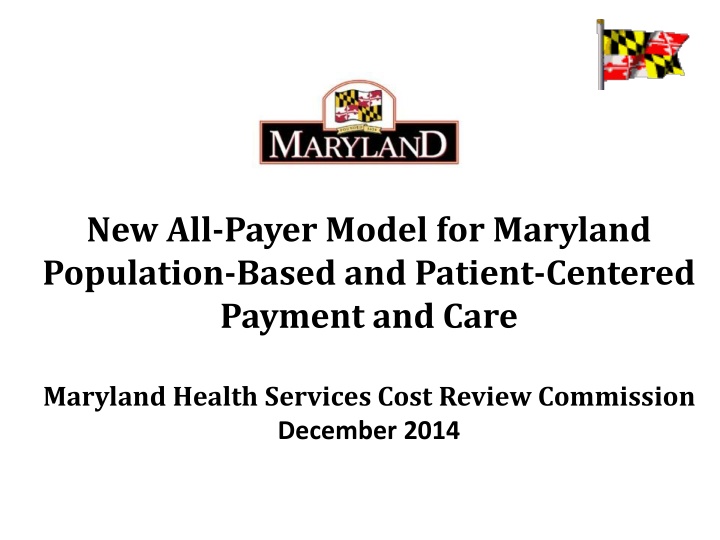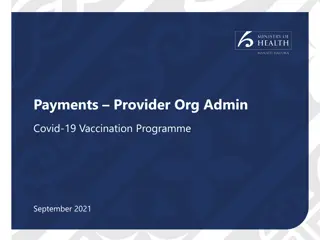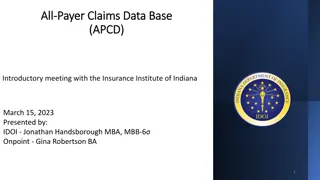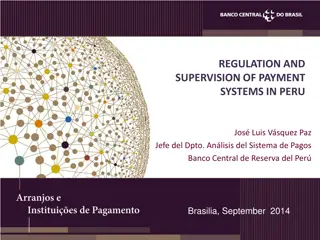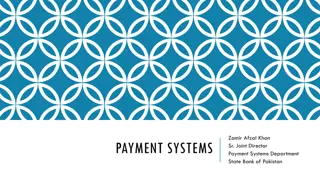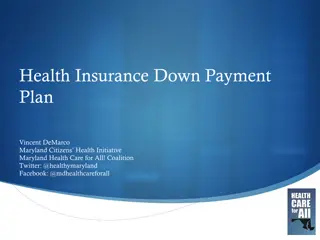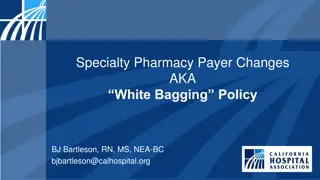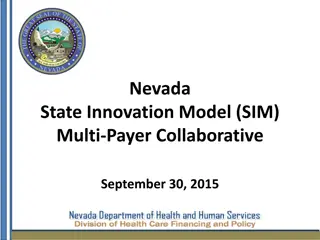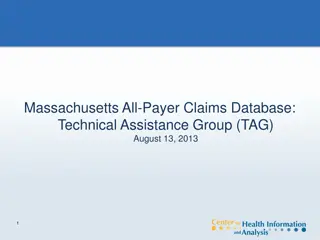Maryland's New All-Payer Model - Transforming Healthcare Payment
Maryland is implementing a groundbreaking All-Payer Model focused on patient-centered care and population-based payment. This model, approved in 2014, aims at modernizing Medicare waivers and shifting the focus to all-payer, per capita, total hospital payment, and quality. It emphasizes improving patient outcomes, controlling costs, and enhancing healthcare delivery systems. The agreement outlines revenue growth ceilings, Medicare payment savings, patient-centered measures, and reductions in preventable conditions. This innovative approach aims to improve patient care, population health, and lower the overall cost of care.
Download Presentation

Please find below an Image/Link to download the presentation.
The content on the website is provided AS IS for your information and personal use only. It may not be sold, licensed, or shared on other websites without obtaining consent from the author.If you encounter any issues during the download, it is possible that the publisher has removed the file from their server.
You are allowed to download the files provided on this website for personal or commercial use, subject to the condition that they are used lawfully. All files are the property of their respective owners.
The content on the website is provided AS IS for your information and personal use only. It may not be sold, licensed, or shared on other websites without obtaining consent from the author.
E N D
Presentation Transcript
http://broadneck.info/wp-content/uploads/2009/05/maryland_logo.jpghttp://broadneck.info/wp-content/uploads/2009/05/maryland_logo.jpg New All-Payer Model for Maryland Population-Based and Patient-Centered Payment and Care Maryland Health Services Cost Review Commission December 2014
Focus and Opportunities of New Model maryland.gov
Approved New All-Payer Model Maryland is implementing a new All-Payer Model for hospital payment New Model contract approved by CMS/CMMI effective January 1, 2014 Modernizes Medicare waiver in place since 1977 and maintains benefits Health Services Cost Review Commission leading the implementation The All-Payer Model shifts focus From per inpatient admission hospital payment To all payer, per capita, total hospital payment and quality 3
New Model Agreement at a Glance All-Payer total hospital per capita revenue growth ceiling for Maryland residents tied to long term state economic growth (GSP) per capita 3.58% maximum annual growth rate for first 3 years Medicare payment savings for Maryland beneficiaries compared to dynamic national trend. Minimum of $330 million in savings over 5 years Patient and population centered measures and targets to assure care and population health improvement Medicare readmission reductions to national average Continued aggressive reductions in preventable conditions under Maryland s Hospital Acquired Condition program (MHAC) Many others 4
Shifts Focus to Patients Unprecedented effort to improve health and outcomes, and control costs for patients Focus on providing the right services and reducing utilization that can be avoided with better care, supported by changed hospital payment model Change delivery system together with all providers Improve Patient Care Maryland s All Payer Model Improve Population Health Lower Total Cost of Care 5
Creates New Context for HSCRC Align payment with new ways of organizing and providing care Contain growth in total cost of hospital care in line with requirements Increase focus on patients and quality of care Better care Better health Lower cost 6
New Hospital Model Facilitates Change CMS contract required population based or global models for hospital rate setting by the end of 5 years All hospitals elected to adopt global budgets by July 1, 2014 (~95% of hospital revenues under global budgets) What is a global budget? A revenue budget for the hospital covering all of its services, set at the beginning of the year Budget is not dependent on volume as a result, it supports needed delivery improvements 7
Hospitals Improve Care by Reducing Potentially Avoidable Utilization (PAUs) PAUs are Hospital care that is unplanned and can be prevented through improved care, coordination, effective primary care and improved population health. Readmissions/Rehospitalizations Preventable Admissions and ER Visits that can be reduced with improved community based care Avoidable admissions from skilled nursing facilities and assisted living residents that can be reduced with care integration and prevention Health care acquired conditions that can be reduced with quality improvements Admissions and ER visits for high needs patients that can be moderated with better chronic care and care coordination 8
Expected Outcomes Better care and lower costs benefitting consumers, business, and government Thank you for the opportunity to work together to improve care for Marylanders 9
